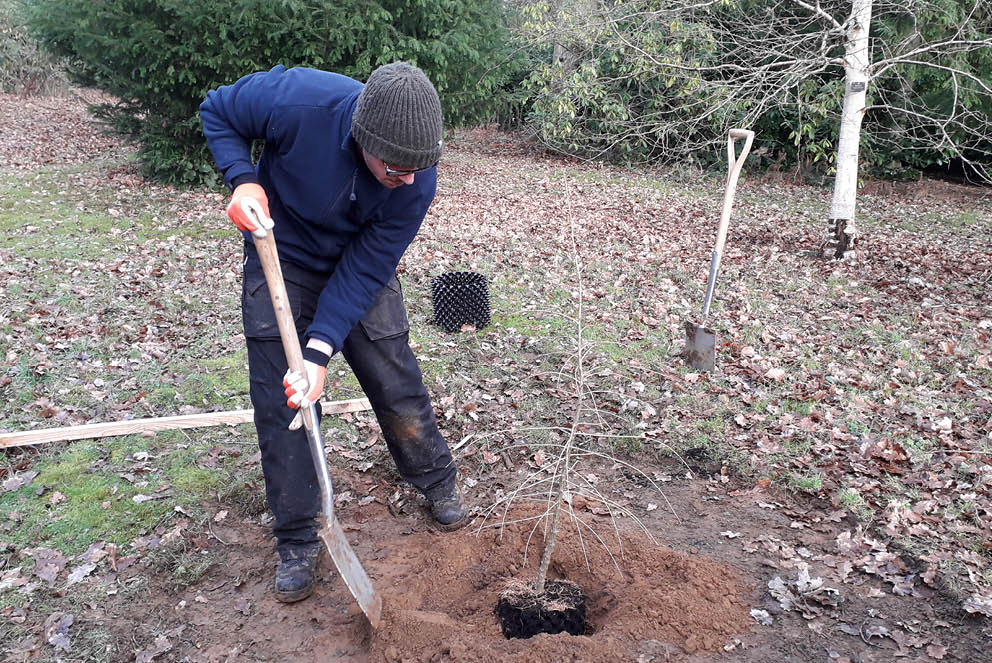Planting with a little help from our friends
One of the most important aspects of our work here is continuing to grow our staff’s skills and knowledge, so we can ensure that the trees are receiving the best possible care.
In order to do this we work with gardens and arboreta around the world, sharing technical knowledge and best practice. These partnerships also help us to develop the next generation of arborists!
In January, we were joined by Trainee Horticulturalist Matt, from the University of Bristol Botanic Garden, who helped us complete the mammoth task of planting 211 trees into the collection this winter! We caught up with Matt before he left to find out what he learnt about the Westonbirt planting process.
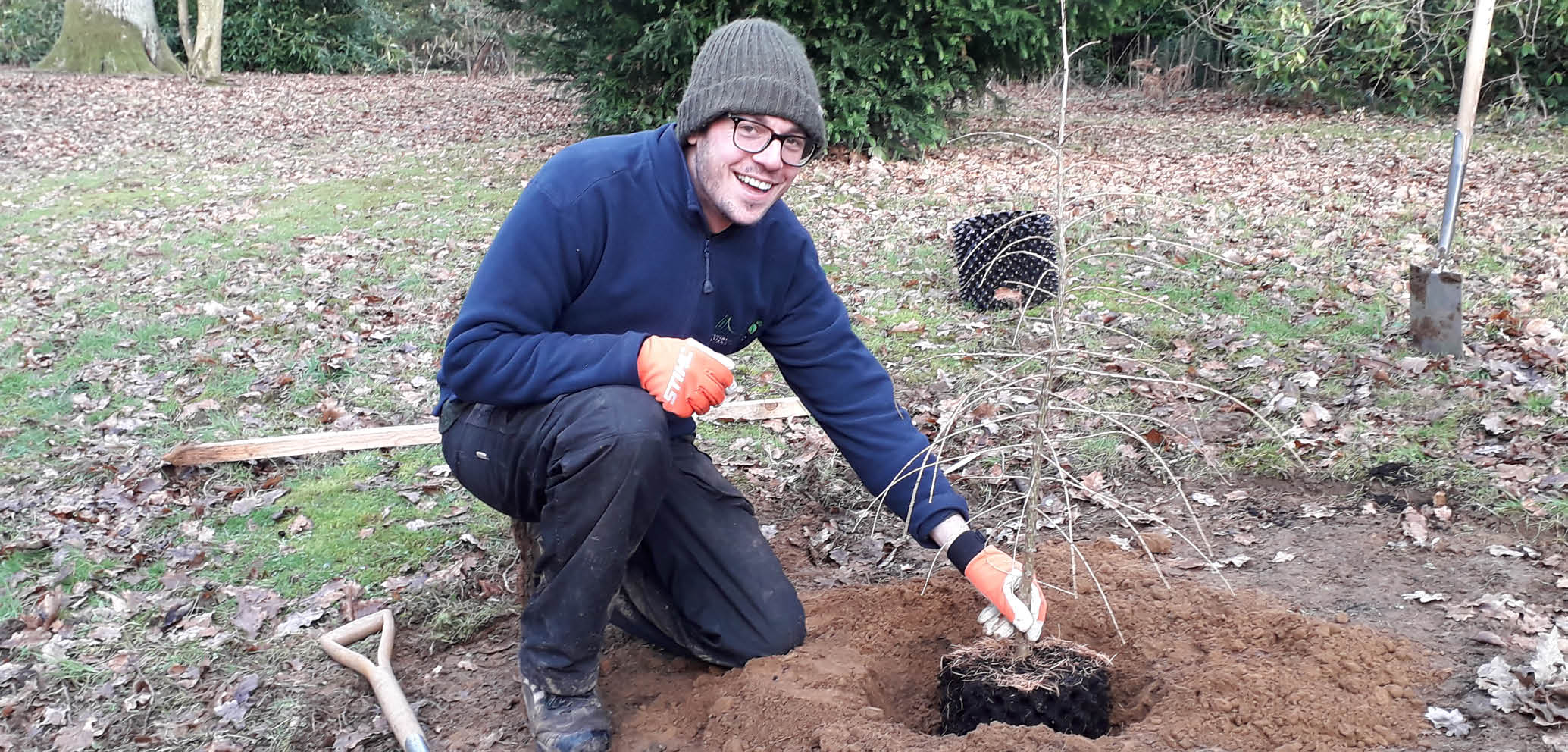
What were you most looking forward to in your week at the Arboretum?
I was very excited to come here. I haven’t planted many trees before, and we have very different plants at the Botanic Garden so this is a new experience for me. Westonbirt, unsurprisingly, has a wide variety of trees- so far I’ve planted a California nutmeg (Torreya californica), and a European larch (Larix decidua), which is one of the few deciduous conifers and was collected by Westonbirt’s tree team on a seed collecting trip to Italy in 2016 – amazingly 80% of Westonbirt’s plants come from wild sources that are collected on seed trips!
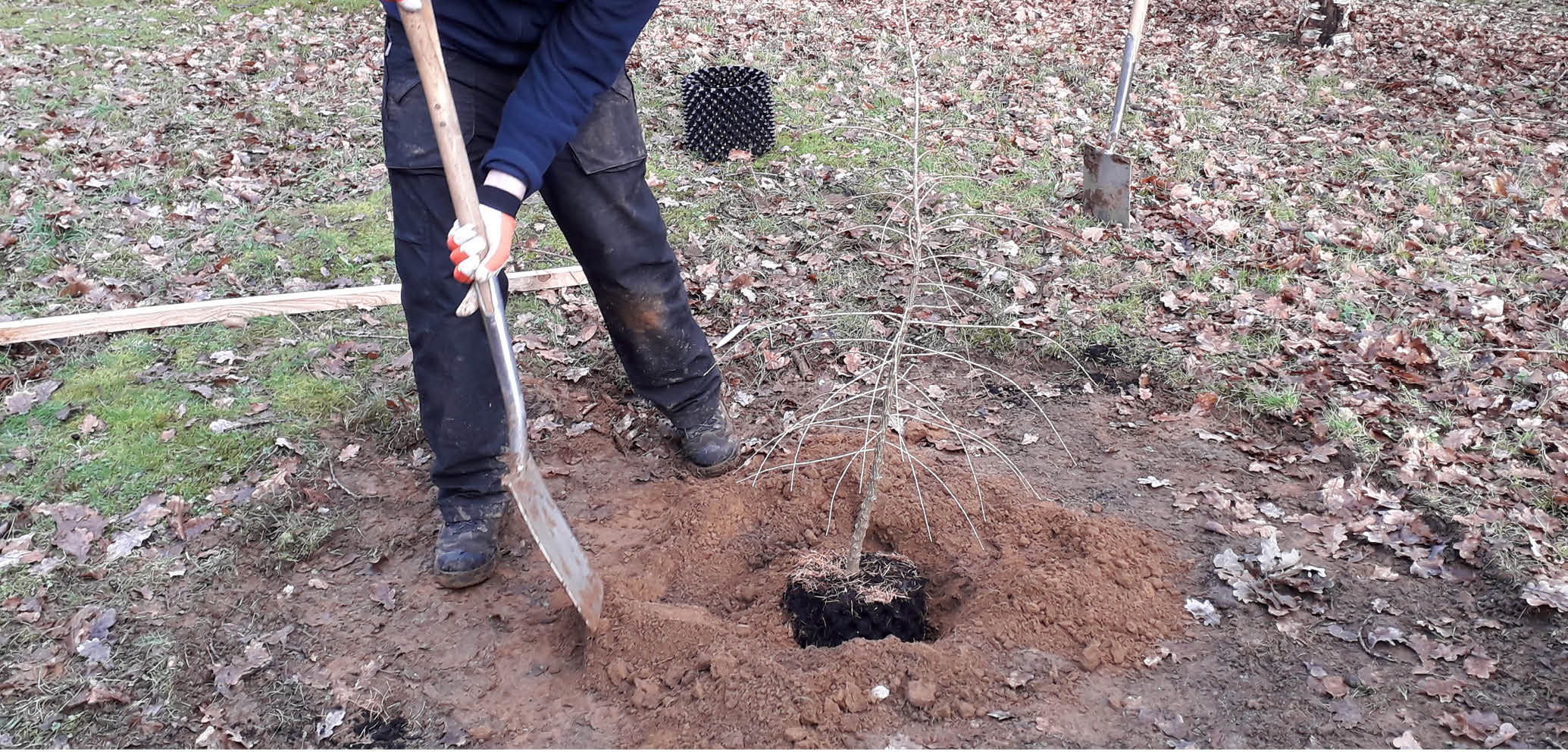
What have you learnt about the planting process at Westonbirt?
There are so many things to consider when choosing what to plant in a garden of this size! The team have to think really carefully about the eventual size of the tree to make sure it will have plenty of space to grow, and they also have to take into account the surrounding trees and whether new plantings will fit within the picturesque landscape.
Once the Curator and Propagator have decided where the new plants will go, they mark the area with a stake which has the name of the plant written on it. The tree team then go around, take up the turf and put the plants in.
The planting method is very different here at Westonbirt to the Botanic Garden. The team here put the trees in at a much younger age, in order to allow them to develop as they would in the wild, and they also plant the trees higher in the ground, to ensure that the trunk doesn’t sink under the soil and rot. Once the new plant is in the ground, a 3-4 inch layer of mulch is spread around the plant, which keeps in the moisture and protects it from soil compaction and mowers.
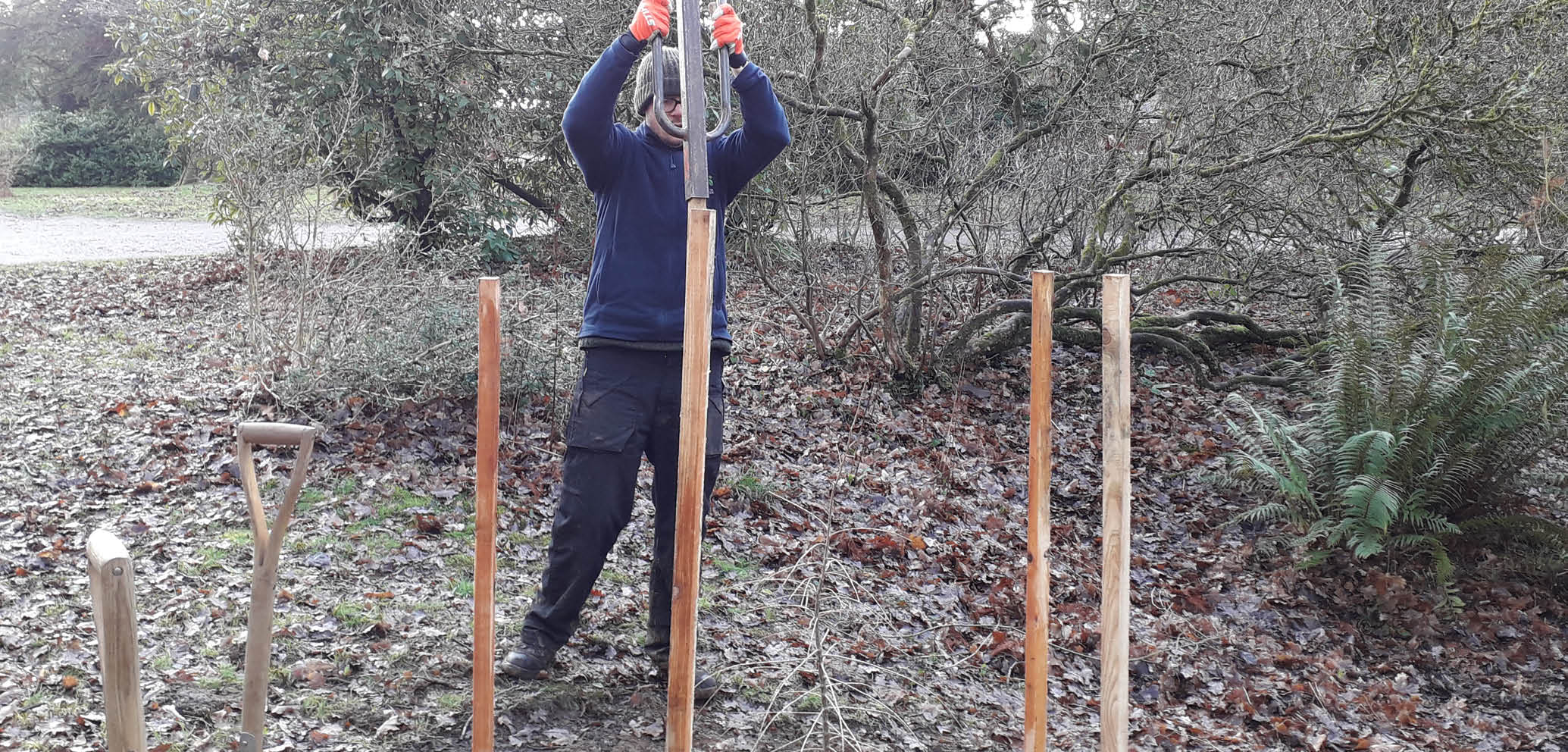
Even the mulch the Arboretum uses is interesting! The mulch used at the Arboretum is made from Westonbirt timber, which is produced as part of the sustainable land management, and is then chipped and pasteurised by heating it to a minimum temperature for a set period of time, 60 degrees for 3 days or 45 degrees for 6 days.
A one-metre high fence is then placed around the tree to protect it from rabbits and roe deer that may eat the bark.
Finally, the exact location of the tree has to be measured so that it can be accurately recorded on the Arboretum’s database.
The new plants are left to develop as they would naturally – and the team don’t water any of the plants! The over-story created by older and taller plants means that there is very little water evaporation, and so additional watering is unnecessary.
The new trees are routinely checked for a number of years after planting, and then allowed to flourish as they would in the wild.
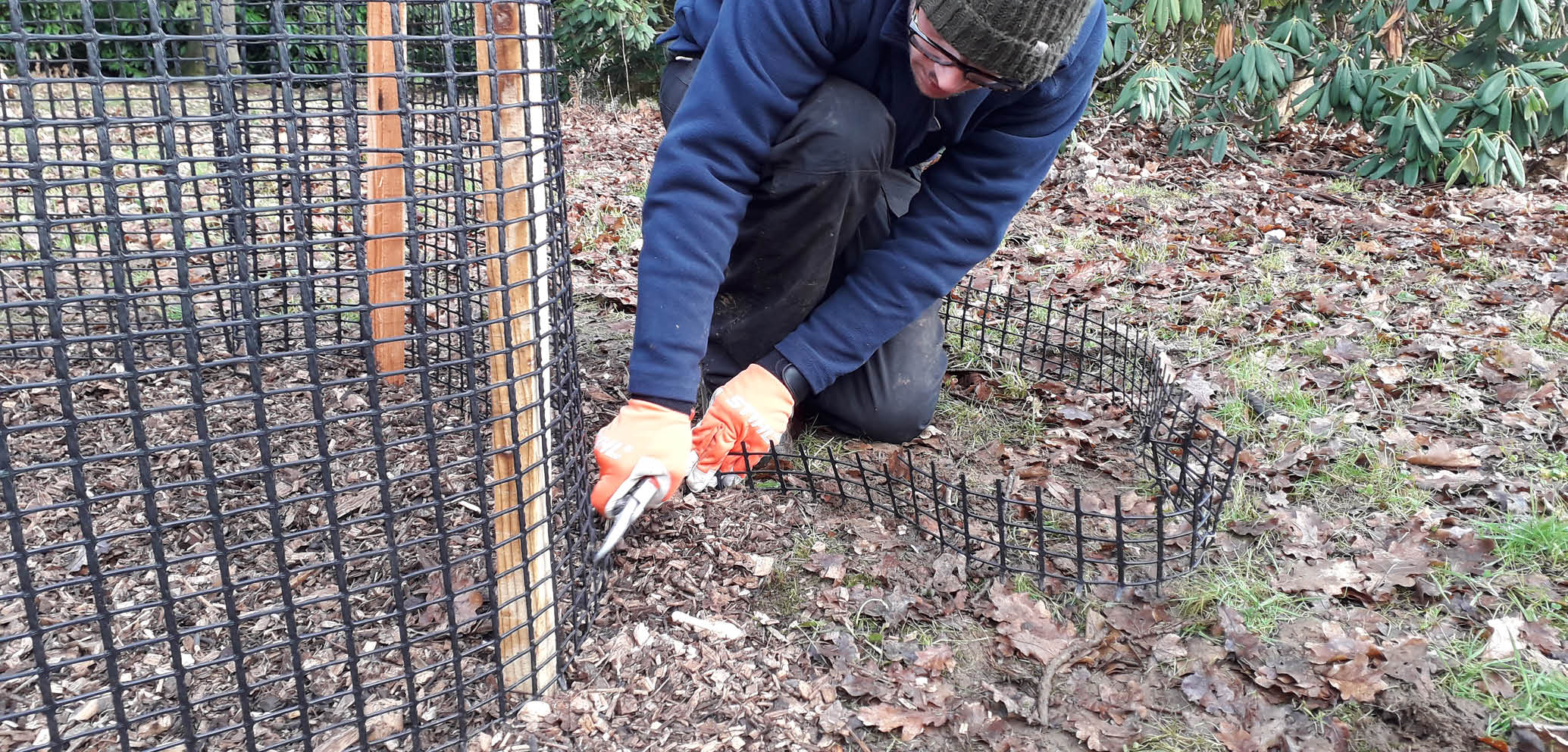
I’ve definitely learned a lot from my time with the Westonbirt team, and am looking forward to coming back and seeing the trees I helped to plant develop and grow in the future!
Look out for next week's blog featuring one of the Friends!
Take a look at the how the tree team planted 211 new trees this winter...
